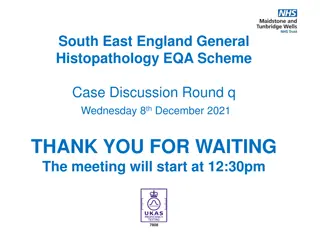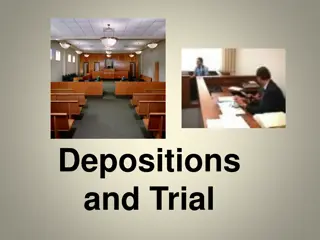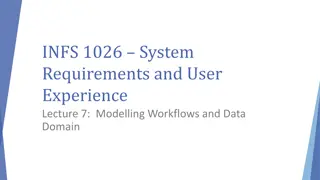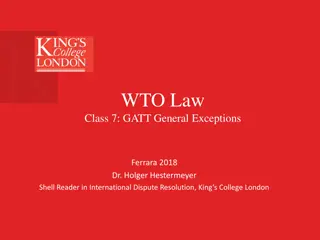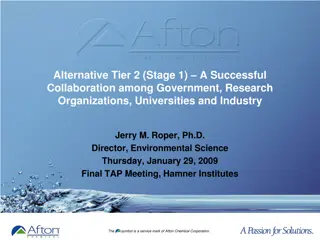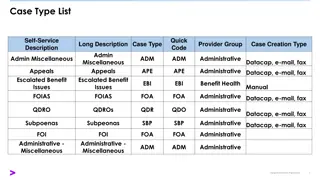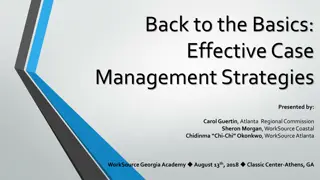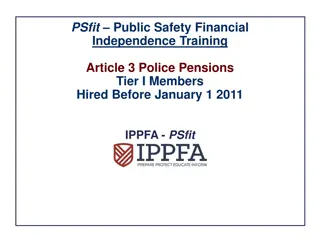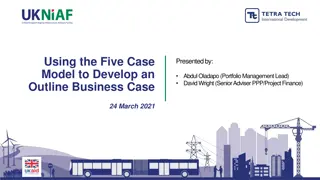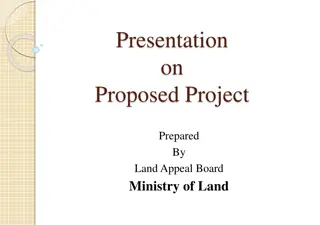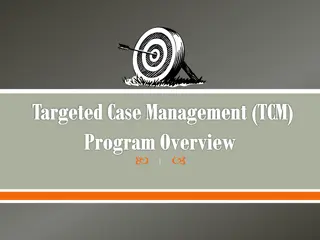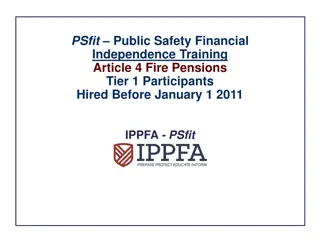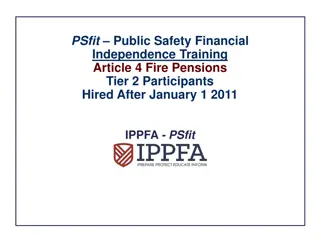
CASE IH Magnum™ 310 PST TIER 4B Tractor Service Repair Manual Instant Download [ZFRF03123 - ]
Please open the website below to get the complete manualnn//
Download Presentation

Please find below an Image/Link to download the presentation.
The content on the website is provided AS IS for your information and personal use only. It may not be sold, licensed, or shared on other websites without obtaining consent from the author. Download presentation by click this link. If you encounter any issues during the download, it is possible that the publisher has removed the file from their server.
E N D
Presentation Transcript
SERVICE MANUAL Magnum 250 Magnum 280 Magnum 310 Magnum 340 Magnum 250 Magnum 280 Magnum 310 Magnum 340 Magnum 310 Rowtrac Magnum 340 Rowtrac Powershift Transmission (PST) Tractor PIN ZFRF03123 and above Magnum 310 Rowtrac Magnum 340 Rowtrac Powershift Transmission (PST) Tractor PIN ZFRF03123 and above SERVICE MANUAL 1/5 Part number 47910408 Part number 47910408 1st edition English October 2015 2015 CNH Industrial America LLC. All Rights Reserved.
Link Product / Engine Product Market Product Europe Engine Magnum 250 PST TIER 4B [ZFRF03123 - ] Magnum 280 PST TIER 4B [ZFRF03123 - ] Magnum 310 PST TIER 4B [ZFRF03123 - ] Magnum 340 PST TIER 4B [ZFRF03123 - ] Magnum 310 Rowtrac PST TIER 4B [ZFRF03123 - ] Magnum 340 Rowtrac PST TIER 4B [ZFRF03123 - ] F2CFE613G*B001 Europe F2CFE614G*B002 Europe F2CFE614D*B002 Europe F2CFE614C*B002 Europe F2CFE614D*B002 Europe F2CFE614C*B002 47910408 25/09/2015
Contents INTRODUCTION Engine....................................................................................... 10 [10.001] Engine and crankcase ............................................................. 10.1 [10.101] Cylinder heads ..................................................................... 10.2 [10.202] Air cleaners and lines .............................................................. 10.3 [10.216] Fuel tanks .......................................................................... 10.4 [10.218] Fuel injection system............................................................... 10.5 [10.254] Intake and exhaust manifolds and muffler ......................................... 10.6 [10.304] Engine lubrication system.......................................................... 10.7 [10.310] Aftercooler.......................................................................... 10.8 [10.400] Engine cooling system ............................................................. 10.9 [10.414] Fan and drive .................................................................... 10.10 [10.500] Selective Catalytic Reduction (SCR) exhaust treatment......................... 10.11 Power coupling........................................................................... 19 [19.100] Drive shaft.......................................................................... 19.1 [19.110] Flywheel damper ................................................................... 19.2 [19.120] Drive shaft shield assembly........................................................ 19.3 Transmission.............................................................................. 21 [21.105] Powershift transmission lubrication system........................................ 21.1 [21.113] Powershift transmission ............................................................ 21.2 [21.135] Powershift transmission external controls.......................................... 21.3 [21.155] Powershift transmission internal components...................................... 21.4 [21.200] Dropbox ............................................................................ 21.5 [21.900] Hydraulic pump drive............................................................... 21.6 Four-Wheel Drive (4WD) system .................................................. 23 [23.202] Electro-hydraulic control ........................................................... 23.1 47910408 25/09/2015
https://www.ebooklibonline.com Hello dear friend! Thank you very much for reading. Enter the link into your browser. The full manual is available for immediate download. https://www.ebooklibonline.com
[23.314] Drive shaft.......................................................................... 23.2 Front axle system ....................................................................... 25 [25.100] Powered front axle ................................................................. 25.1 [25.102] Front bevel gear set and differential ............................................... 25.2 [25.108] Final drive hub, steering knuckles, and shafts ..................................... 25.3 [25.122] Axle suspension control............................................................ 25.4 Rear axle system........................................................................ 27 [27.100] Powered rear axle.................................................................. 27.1 [27.106] Rear bevel gear set and differential................................................ 27.2 [27.120] Planetary and final drives .......................................................... 27.3 [27.610] Rear axle track yoke assembly .................................................... 27.4 Power Take-Off (PTO)................................................................. 31 [31.104] Rear electro-hydraulic control...................................................... 31.1 [31.110] One-speed rear Power Take-Off (PTO) ............................................ 31.2 [31.114] Two-speed rear Power Take-Off (PTO) ............................................ 31.3 [31.146] Front Power Take-Off (PTO) ....................................................... 31.4 Brakes and controls .................................................................... 33 [33.110] Parking brake or parking lock ...................................................... 33.1 [33.202] Hydraulic service brakes ........................................................... 33.2 [33.220] Trailer brake hydraulic control...................................................... 33.3 [33.224] Trailer brake pneumatic control .................................................... 33.4 [33.240] Emergency brake .................................................................. 33.5 Hydraulic systems....................................................................... 35 [35.000] Hydraulic systems.................................................................. 35.1 [35.102] Pump control valves................................................................ 35.2 [35.106] Variable displacement pump ....................................................... 35.3 [35.114] Three-point hitch control valve ..................................................... 35.4 [35.124] Three-point hitch hydraulic adjustment ............................................ 35.5 47910408 25/09/2015
[35.204] Remote control valves ............................................................. 35.6 [35.300] Reservoir, cooler, and filters........................................................ 35.7 [35.304] Combination pump units ........................................................... 35.8 Hitches, drawbars, and implement couplings.................................. 37 [37.110] Rear three-point hitch .............................................................. 37.1 [37.162] Front hitch.......................................................................... 37.2 Steering..................................................................................... 41 [41.101] Steering control .................................................................... 41.1 [41.200] Hydraulic control components...................................................... 41.2 [41.206] Pump............................................................................... 41.3 [41.432] Autoguidance steering ............................................................. 41.4 [41.910] Auxiliary steering................................................................... 41.5 Wheels...................................................................................... 44 [44.520] Rear wheels........................................................................ 44.1 Tracks and track suspension........................................................ 48 [48.100] Tracks .............................................................................. 48.1 [48.130] Track frame and driving wheels.................................................... 48.2 [48.134] Track tension units ................................................................. 48.3 [48.138] Track rollers ........................................................................ 48.4 Cab climate control..................................................................... 50 [50.100] Heating............................................................................. 50.1 [50.200] Air conditioning..................................................................... 50.2 [50.300] Cab pressurizing system........................................................... 50.3 Electrical systems....................................................................... 55 [55.000] Electrical system ................................................................... 55.1 [55.010] Fuel injection system............................................................... 55.2 [55.012] Engine cooling system ............................................................. 55.3 47910408 25/09/2015
[55.013] Engine oil system .................................................................. 55.4 [55.014] Engine intake and exhaust system................................................. 55.5 [55.015] Engine control system.............................................................. 55.6 [55.024] Transmission control system....................................................... 55.7 [55.045] Front axle control system .......................................................... 55.8 [55.046] Rear axle control system........................................................... 55.9 [55.050] Heating, Ventilation, and Air-Conditioning (HVAC) control system............... 55.10 [55.051] Cab Heating, Ventilation, and Air-Conditioning (HVAC) controls................. 55.11 [55.100] Harnesses and connectors....................................................... 55.12 [55.130] Rear three-point hitch electronic control system ................................. 55.13 [55.201] Engine starting system........................................................... 55.14 [55.301] Alternator......................................................................... 55.15 [55.302] Battery............................................................................ 55.16 [55.408] Warning indicators, alarms, and instruments .................................... 55.17 [55.512] Cab controls...................................................................... 55.18 [55.513] Cab transmission controls........................................................ 55.19 [55.518] Wiper and washer system........................................................ 55.20 [55.640] Electronic modules............................................................... 55.21 [55.988] Selective Catalytic Reduction (SCR) electrical system .......................... 55.22 [55.DTC] FAULT CODES.................................................................. 55.23 Platform, cab, bodywork, and decals............................................. 90 [90.100] Engine hood and panels ........................................................... 90.1 [90.102] Engine shields, hood latches, and trims ........................................... 90.2 [90.124] Pneumatically-adjusted operator seat.............................................. 90.3 [90.150] Cab................................................................................. 90.4 [90.151] Cab interior......................................................................... 90.5 [90.160] Cab interior trim and panels........................................................ 90.6 47910408 25/09/2015
INTRODUCTION 47910408 25/09/2015 1
INTRODUCTION Foreword - Important notice regarding equipment servicing All repair and maintenance work listed in this manual must be carried out only by qualified dealership personnel, strictly complying with the instructions given, and using, whenever possible, the special tools. Anyone who performs repair and maintenance operations without complying with the procedures provided herein shall be responsible for any subsequent damages. The manufacturer and all the organizations of its distribution chain, including - without limitation - national, regional, or local dealers, reject any responsibility for damages caused by parts and/or components not approved by the manu- facturer, including those used for the servicing or repair of the product manufactured or marketed by the manufacturer. In any case, no warranty is given or attributed on the product manufactured or marketed by the manufacturer in case of damages caused by parts and/or components not approved by the manufacturer. The information in this manual is up-to-date at the date of the publication. It is the policy of the manufacturer for continuous improvement. Some information could not be updated due to modifications of a technical or commercial type, or changes to the laws and regulations of different countries. In case of questions, refer to your CASE IH Sales and Service Networks. 47910408 25/09/2015 3
INTRODUCTION Safety rules Personal safety This is the safety alert symbol. It is used to alert you to potential personal injury hazards. Obey all safety messages that follow this symbol to avoid possible death or injury. Throughout this manual you will find the signal words DANGER, WARNING, and CAUTION followed by special in- structions. These precautions are intended for the personal safety of you and those working with you. Read and understand all the safety messages in this manual before you operate or service the machine. DANGER indicates a hazardous situation that, if not avoided, will result in death or serious injury. WARNING indicates a hazardous situation that, if not avoided, could result in death or serious injury. CAUTION indicates a hazardous situation that, if not avoided, could result in minor or moderate injury. FAILURE TO FOLLOW DANGER, WARNING, AND CAUTION MESSAGES COULD RESULT IN DEATH OR SERIOUS INJURY. Machine safety NOTICE: Notice indicates a situation that, if not avoided, could result in machine or property damage. Throughout this manual you will find the signal word Notice followed by special instructions to prevent machine or property damage. The word Notice is used to address practices not related to personal safety. Information NOTE: Note indicates additional information that clarifies steps, procedures, or other information in this manual. Throughout this manual you will find the word Note followed by additional information about a step, procedure, or other information in the manual. The word Note is not intended to address personal safety or property damage. 47910408 25/09/2015 4
INTRODUCTION Safety rules - General maintenance safety General maintenance safety Keep the area used for servicing the machine clean and dry. Clean up spilled fluids. Service the machine on a firm, level surface. Install guards and shields after you service the machine. Close all access doors and install all panels after servicing the machine. Do not attempt to clean, lubricate, clear obstructions, or make adjustments to the machine while it is in motion or while the engine is running. Always make sure that working area is clear of tools, parts, other persons and pets before you start operating the machine. Unsupported hydraulic cylinders can lose pressure and drop the equipment, causing a crushing hazard. Do not leave equipment in a raised position while parked or during service, unless the equipment is securely supported. Jack or lift the machine only at jack or lift points indicated in this manual. Incorrect towing procedures can cause accidents. When you tow a disabled machine follow the procedure in this manual. Use only rigid tow bars. Stop the engine, remove the key, and relieve pressure before you connect or disconnect fluid lines. Stop the engine and remove the key before you connect or disconnect electrical connections. Scalding can result from incorrect removal of coolant caps. Cooling systems operate under pressure. Hot coolant can spray out if you remove a cap while the system is hot. Allow the system to cool before you remove the cap. When you remove the cap, turn it slowly to allow pressure to escape before you completely remove the cap. Replace damaged or worn tubes, hoses, electrical wiring, etc. The engine, transmission, exhaust components, and hydraulic lines may become hot during operation. Take care when you service such components. Allow surfaces to cool before you handle or disconnect hot components. Wear protective equipment when appropriate. When welding, follow the instructions in the manual. Always disconnect the battery before you weld on the machine. Always wash your hands after you handle battery components. 47910408 25/09/2015 5
SERVICE MANUAL Engine Magnum 250 PST TIER 4B [ZFRF03123 - ] , Magnum 280 PST TIER 4B [ZFRF03123 - ] , Magnum 310 PST TIER 4B [ZFRF03123 - ] , Magnum 310 Rowtrac PST TIER 4B [ZFRF03123 - ] , Magnum 340 PST TIER 4B [ZFRF03123 - ] , Magnum 340 Rowtrac PST TIER 4B [ZFRF03123 - ] 47910408 25/09/2015 10
Engine - Engine and crankcase Engine - Overview The Cursor 9 1 RAIL15TR00417GA The Cursor 9 is a state of the art engine developed by Fiat Powertrain Technologies (FPT) The Cursor 9 used in the Magnum tractors has some significant internal and external differences from Cursor 9 engines used in other CNH products. There are procedures specific to the Magnum engines that are different from the Cursor 9 used in other CNH applications. These changes were made to fit the engine into the Magnum series frames without losing our featured visibility around the hood and chassis. The Cursor 9 engine was introduced in the CNH combines in 2006 and migrated into the Steiger series tractors. It has proven itself to be a consistent reliable performer. The introduction in the Magnum series brings it to new heights with up to 275 kW (374 Hp) (rated) and 316 kW (429 Hp) in power boost mode. 6 cylinder, 24 valve, turbocharged and aftercooled Single overhead cam with roller rocker arms Wastegate turbo/Electronic Variable Geometry Turbocharger (EVGT) High pressure common rail fuel system Selective Catalytic Reduction (SCR) emissions control TIER 4B compliant without internal or external Exhaust Gas Recirculation (EGR) 47910408 25/09/2015 10.1 [10.001] / 3
Engine - Engine and crankcase FPT model number designation NOTE: The FPT engine designation code has evolved over the years. This is the best current information and may not be applicable to previous FPT engines. 2 RAIL15TR01380GA 47910408 25/09/2015 10.1 [10.001] / 4
Engine - Engine and crankcase Visual external differences for Magnum tractor engines There are a few things that make the FPT Cursor 9 engine used in the Magnum tractors visually and mechanically different from other Cursor 9 applications. 3 RAIL15TR00608GA 1. The fuel pump sits higher and closet to the center line of the engine. 2. A two piece valve cover assembly that allows for valve adjustment without removing the entire cover. 3. The rear cover is an oval shape where on other Cursor 9 engines it s round. 4. The flywheel speed sensor is located on the right side of the engine, others have on the left side of the engine. 5. The turbocharger is moved higher and toward the center line of the engine. 6. Exhaust flap for TIER 4B. 47910408 25/09/2015 10.1 [10.001] / 5
Engine - Engine and crankcase Exhaust brake Admission phase: Intake of fresh air. Top dead center: Exhaust valves open, compressed air is released, energy is blown out. Exhaust phase: Cylinder is empty, no energy exchange. Exhaust gases impact against the turbine, creating an additional braking effect. Compression phase: Energy is stored in the compressed air, braking effect increases with compression All Cursor engines are equipped with an advanced engine brake system: the Iveco Turbo Brake (IBT) system. Decompression engine brake Quick responding Integrated in the engine control Linked to cruise control Linked to EBS Advantage Less brake pad wear Automatically engaged Benefit Reduced operation cost Operator ease The engine brake is controlled by the Tractor Control Unit (TCU). The Electronic Service Tool (EST) is used to con- figure the TCU as to whether or not the tractor has an engine brake. 47910408 25/09/2015 10.1 [10.001] / 6
Engine - Engine and crankcase 4 RAIL15TR00415GA The engine brake switch on the Integrated Control Panel (ICP) activates the system. When the switch is activated, and the difference between the commanded (throttle) and actual engine speed exceeds a 30 % threshold, the software activates the brake. Air Induction - cross flow cylinder head The cylinder head is of the cross flow design, inlet on one side and exhaust on the other. This and four valves per cylindergiveitexcellentbreathingabilityandefficienttem- peraturecontrol. Theairissuppliedtotheinletbyawaste- gate turbocharger or a Variable Geometry Turbocharger (VGT). 5 RAIL15TR00376BA 47910408 25/09/2015 10.1 [10.001] / 7
Engine - Engine and crankcase Wastegate turbocharger The wastegate turbocharger allows for a larger tur- bocharger to be installed producing higher boost pres- suresinthelowandmidrangerpmwhilenotover-boosting at high rpm. Intake pressure builds against a diaphragm in the waste- gate and opens a valve allowing exhaust to bypass the turbine therefore slowing the compressor and limiting the pressure in the intake manifold. 6 RAIL15TR00396BA 47910408 25/09/2015 10.1 [10.001] / 8
Engine - Engine and crankcase Electronically Variable Geometry Turbocharger (eVGT) The electronically Variable Geometry Turbocharger (eVGT) is used on the TIER 4A Magnum 370 and TIER 4B Magnum 280, 310, 340 and 380. . The eVGT is electronically controlled by the Engine Control Unit (ECU). 7 RAIL15TR00383BA 8 9 RAIL15TR00395BA RAIL15TR00394BA Vanes open (low boost) Vanes closed (high boost) The eVGT uses a series of aerodynamic vanes to direct exhaust toward the turbine controlling both the velocity and angle the exhaust contacts the turbine. This gives the ECU the ability to dynamically tune the boost pressure at any given engine speed and load, Improving performance and fuel economy. Fully open the velocity slows and the angle is decreased therefore the turbine and compressor turn slower producing less boost. When needed, the vanes close increasing the velocity and angle, therefore increasing turbine and com- pressor speed, producing higher boost anytime it is needed across the entire operating range of the engine. 47910408 25/09/2015 10.1 [10.001] / 9
Engine - Engine and crankcase EDC17CV41 A new Engine Control Unit (ECU) is used on TIER 4B engines, the EDC17CV41. It is used on FPT engines from the 4.5 L NEF to the 12.9 L Cursor engines. t has two 96 pin electrical connectors: one for the engine components and one for the tractor connections. Pin connections will be common for all the CNH/FPT engines using this controller. 1. Tractor connector 2. Engine connector The EDC17CV41 controls all engine and Selective Catalytic Reduction (SCR) functions. 10 RAIL14TR00234PA 47910408 25/09/2015 10.1 [10.001] / 10
Engine - Engine and crankcase Lubrication System 11 RAIL15TR00416GA Oil pressure is controlled by a 5 bar (72.5 psi) relief valve (1) in the oil galley coming from the gear type oil pump (2) located behind the rear cover of the engine. The oil pump also has an over pressurization relief valve (3) set at approximately 10 bar (145 psi). 12 RAIL15TR00367AA 13 RAIL15TR00389BA A 5 bar (72.5 psi) oil pressure control valve (1) is located on the left hand side of the engine. The oil pump assembly (2) includes an over pressurization relief valve (3) that protects the pump. The valve opens at 9.4 - 10.8 bar (136.3 - 156.6 psi). 47910408 25/09/2015 10.1 [10.001] / 11
Engine - Engine and crankcase Blow-by recirculation Blow-by is controlled by a rotary filter bolted to the rear of the camshaft. As the cam turns excess oil is thrown off by centrifugal force, finer oil is filtered out. The blow-by then passes through the center of the camshaft and exits at the front. This filter must be replaced at regular intervals or the en- gine will build up excessive pressure in the crank case. 14 RAIL15TR00366AA Built into the cover at the front is a valve that allows blow-by pressures out, but will not allow atmospheric pressure into the crankcase. This filtered air is directed back into the inlet and re-burned. 15 RAIL15TR00377BA 47910408 25/09/2015 10.1 [10.001] / 12
Engine - Engine and crankcase Connecting Rods Connecting rods must all be the same weight class in an engine. The weight class is identified by a color swatch on the connecting rod. There are three classes of crankshaft bearing diameters (boresize)ontheconnectingrod. Theboresizeismarked by a color code on the rod. The oil clearance is deter- mined by the connecting rod bore size and the crankshaft journal size. Based on connecting rod bore diameter and the crankshaft journal diameter a bearing set must be de- termined. Connecting rods are the fracture split type. Care must be taken when handling these rods as any damage to the cap/rod mating area requires that the rod be replaced. Bore diameter and color designation Connecting rod weight, class and color 85.987 - 58.996 85.997 - 86.005 86.006 - 86.013 85.987 - 58.996 85.997 - 86.005 86.006 - 86.013 85.987 - 58.996 85.997 - 86.005 86.006 - 86.013 Yellow Green Blue Yellow Green Blue Yellow Green Blue 3450 3470 grams Grade A, Yellow 3471 3490 grams Grade B, Green 3491 3510 grams Grade C, Blue 16 RAIL15TR00397CA Fracture split rods give nearly perfect alignment. In both examples the red (rod) profiles are identical as are the blue (cap) profiles. In the top example the rod fits perfectly with the cap. In the lower example the rod is in the same position but the cap is reversed, here the material peaks align peak to peak and keeps cap from mating with the rod. 17 RAIL15TR00375AA 47910408 25/09/2015 10.1 [10.001] / 13
Engine - Engine and crankcase Crankshaft The crankshaft are classified in three classes: there are three classes for the connecting rod journals and three classes for the main journals. The crankshaft journal sizes are stamped on the rear flyweight for both the connecting rod journals and the main journals. Six digits for the connecting rods and seven digits for the mains. The crankshaft may have been ground - 0.127 mm un- dersize from the factory. A (1) preceding the six digits is a standard crankshaft, a (2) preceding is for a crank- shaft that has been ground undersize. 18 CRANKIDENTIFY Themainbearingboresintheblockareclassed1,2,or3 and are located on the rear of the block lower right hand side. If the classifications are not found, the crankshaft must be measured and classified for each journal. Standard crankshaft connecting rod bearing selection Connecting rod bore Class (2) Green paint Green Yellow Green Green Red Green Standard crankshaft connecting rod journals Class (1) 81.915 to 81.925 mm Class (2) 81.925 to 81.935 mm Class (3) 81.935 to 81.945 mm Class (1) Yellow paint Green Green Red Green Red Red Class (3) Blue paint Yellow Yellow Green Yellow Green Green NOTE: It may be necessary to mix two bearing shells in one journal. 0.127 mm under-size crankshaft connecting rod bearing selection - 0.127 mm Standard crankshaft connecting rod journals Class (1) 81.789 to 81.799 mm Class (2) 81.799 to 81.809 mm Class (3) 81.809 to 81.819 mm Connecting rod bore Class (1) Yellow paint Class (2) Green paint Class (3) Blue paint Green/Black Green/Black Red/Black Green/Black Red/Black Red/Black Green/Black Yellow/Black Green/Black Green/Black Red/Black Green/Black Yellow/Black Yellow/Black Green/Black Yellow/Black Green/Black Green/Black 47910408 25/09/2015 10.1 [10.001] / 14
Engine - Engine and crankcase Standard crankshaft main bearing selection Main bearing bore fit class Class (2) Green Yellow Green Green Red Green Standard crankshaft journals Class (1) 92.970 to 92.980 mm Class (2) 92.980 to 92.990 mm Class (3) 92.990 to 93.000 mm Class (1) Green Green Red Green Red Red Class (3) Yellow Yellow Green Yellow Green Green 0.127 mm under-size crankshaft main bearing selection Main bearing bore fit class Class (2) Green/Black Yellow/Black Green/Black Green/Black Red/Black Green/Black Standard crankshaft journals Class (1) 92.843 to 92.853 mm Class (2) 92.853 to 92.863 mm Class (3) 92.863 to 93.872 mm Class (1) Class (3) Green/Black Green/Black Red/Black Green/Black Red/Black Red/Black Yellow/Black Yellow/Black Green/Black Yellow/Black Green/Black Green/Black With the variables in the bearing selection process, it is always a good idea to use a plastic gauge to test each journal for proper clearance. 19 RAIL15TR00392BA 47910408 25/09/2015 10.1 [10.001] / 15
Engine - Engine and crankcase Camshaft installation and timing When timing or adjusting valves it is critical to position the A, B, C or D holes in the center of the view hole (1) at the bottom of the bell housing. Serious engine damage can occur if procedures are not followed carefully. A. TDC 3 and 4 B. TDC 1 and 6 C. TDC 2 and 5 D. 54 before TDC 1 and 6 When timing or adjusting valves it is critical to position the A, B, C or D holes in the center of the view hole (1) at the bottom of the bell housing. Serious engine damage can occur if procedures are not followed carefully. 20 RAIL15TR00406FA NOTE: All references to flywheel rotation will be made as viewed from the rear of the engine. NOTE: The A, B and C holes are marked with one hash mark (l) and the D hole with two hash marks (ll). Position the flywheel at TDC 1 and 6, the B hole at the bottom. This can be done by locating the D hole at the bottom view hole in the bell housing, and then turning the flywheel counterclockwise until the B hole appears. Once the flywheel is in this position, it should be pinned in position with the flywheel pinning tool 380000150 in the sensor hole. The engine is now ready to have the camshaft installed. 21 47910408 25/09/2015 10.1 [10.001] / 16
Engine - Engine and crankcase Install the camshaft with the three holes (viewed from the front) in the 9, 12 and 3 o clock position. NOTE: Do not trust the back of the cam for positioning. 22 RAIL15TR00380BA Install the camshaft gear as shown. In Magnum tractors, the cam drive must be installed with the three phonic wheel mounting holes making an arrow pointing to the right. If this is not done, the phonic wheel will not be able to be timed. The slotted holes must be centered on the camshaft bolt holes to make fine adjustments to the cam later in this process. Install the bolts and tighten, but do not torque yet; they will be loosened later in this procedure. 23 RAIL15TR00378BA 47910408 25/09/2015 10.1 [10.001] / 17
Suggest: If the above button click is invalid. Please download this document first, and then click the above link to download the complete manual. Thank you so much for reading
Engine - Engine and crankcase Install the rocker arm shaft assembly using tool number: 380000149. 24 RAIL15TR00374AA Camshaft timing The double idler gear location is fixed. The upper single idler gear location can be adjusted and is used to set the back lash between the idler gear and the camshaft gear. This back lash has to be checked and set since this is an overhead camshaft engine. All for the gear train is mounted to the block except the camshaft gear which is mounted to the cylinder head. Set the back lash before the rocker arm assembly is installed. Use a dial indicator to measure the camshaft gear to idler backlash. Onlymeasurethebacklashbetweentheupper idler gear and the camshaft gear. Install the dial indicator tangential to a camshaft gear tooth. Hold the idler so that it does not move and rock the camshaft gear. Correct back lash is 0.080 - 0.180 mm (0.003 - 0.007 in). 25 RAIL15TR01370BA Rotate the flywheel clockwise until the D hole appears in the bottom view hole. Install a dial indicator (1) on the number 3 exhaust valve rocker arm camshaft roller (2) as shown. Preload the dial indicator 6.00 mm (0.24 in). Rotate the engine clockwise until the dial indicator stops moving: lift up on the valve end of the rocker arm to take any clearance or play out and to verify that you are on the inner base circle of the camshaft, the lowest point. 26 RAIL15TR01371BA 47910408 25/09/2015 10.1 [10.001] / 18
https://www.ebooklibonline.com Hello dear friend! Thank you very much for reading. Enter the link into your browser. The full manual is available for immediate download. https://www.ebooklibonline.com

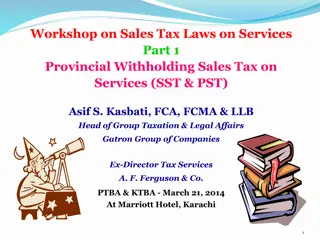

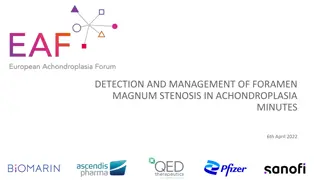


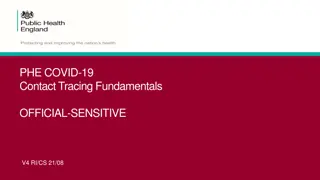
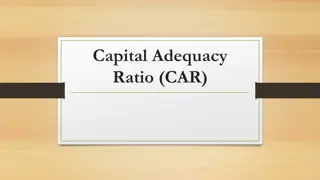
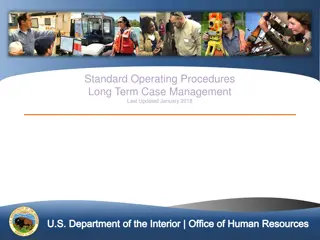
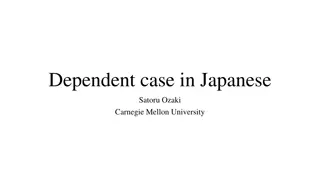

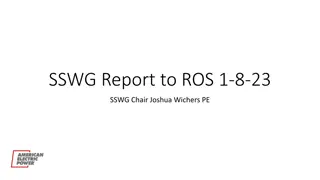
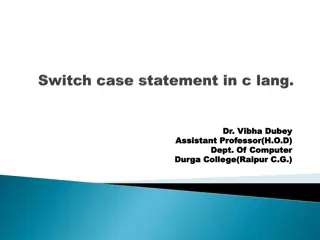
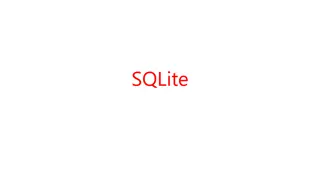


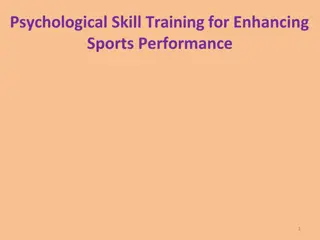
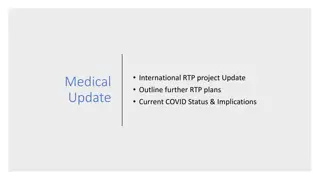
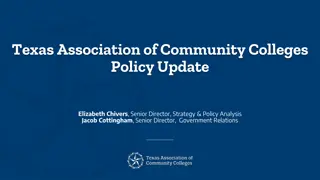

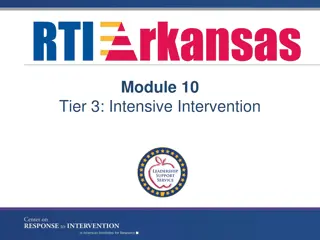
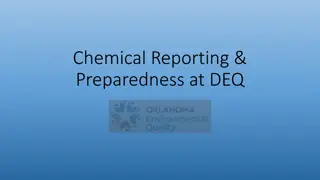
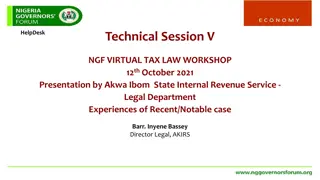
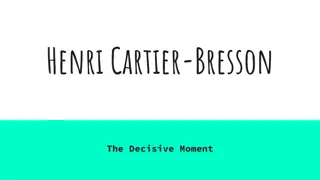

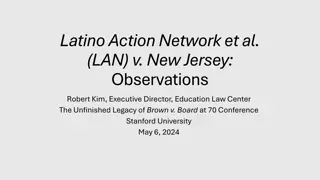
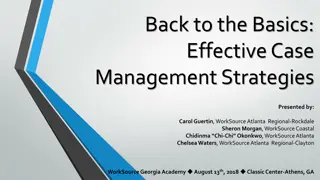
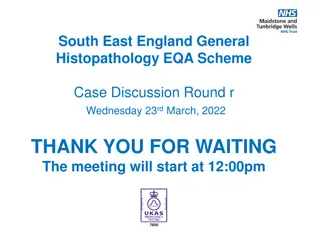
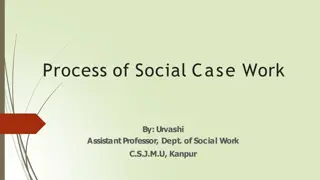
![Comprehensive Case Study on [Insert Case Title Here]](/thumb/159705/comprehensive-case-study-on-insert-case-title-here.jpg)
